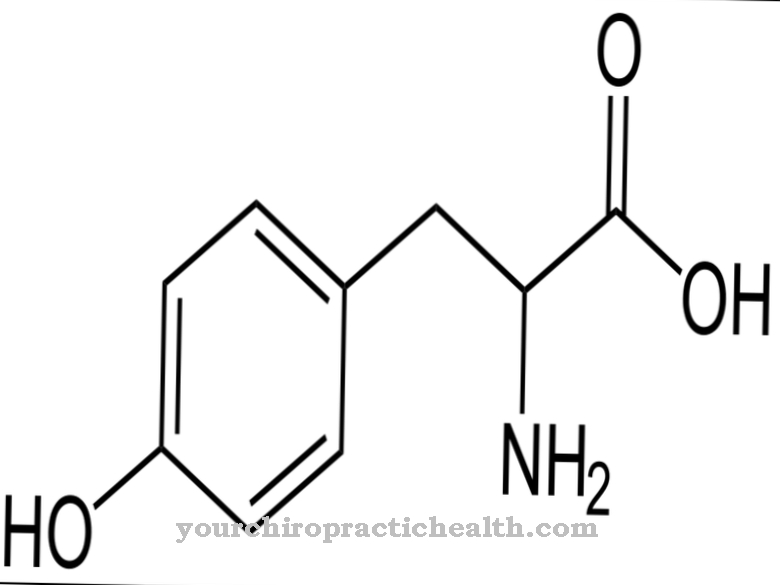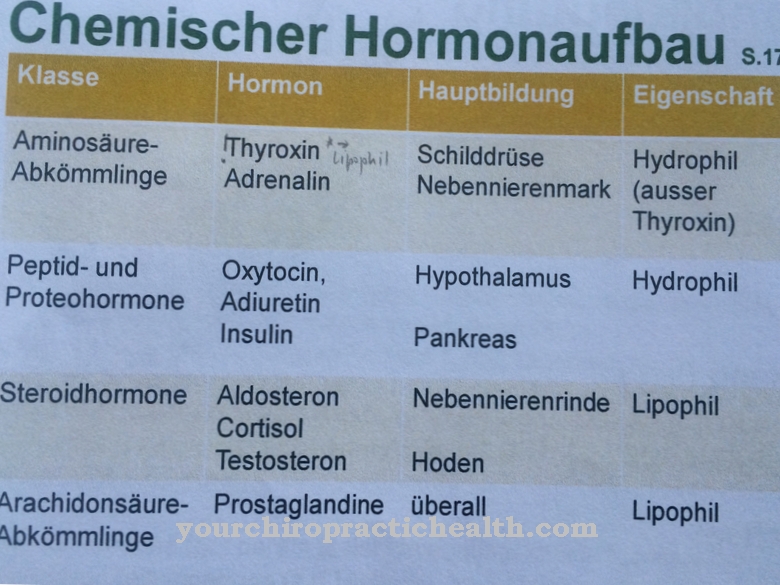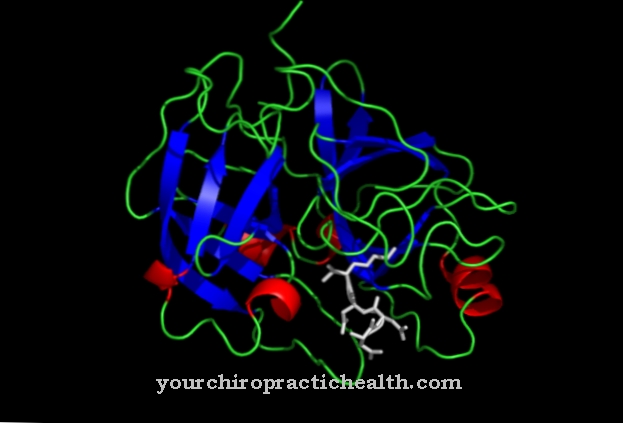Triiodothyronine, also called T3, is an important hormone made in the thyroid. Together with T4, another thyroid hormone, it plays a major role in many metabolic processes in the human body.
What is triiodothyronine?

The hormones triiodothyronine (T3) and thyroxine (T4) are known as thyroid hormones. They are of great importance in growth processes and in energy metabolism. Both hormones are very similar and only differ in one iodine atom.
Triiodothyronine has three iodine atoms and is therefore also referred to as T3. Thyroxine, also called T4, is accordingly a molecule that has four iodine atoms attached to it.
Production, Education & Manufacturing
Both thyroid hormones are produced in special cells of the thyroid from the amino acid tyrosine. For a T3 molecule, one or two iodine atoms are attached to two tyrosine molecules.
The thyroid therefore needs iodine for production. It receives this from the blood in the form of iodide. Iodine (also spelled iodine) is essential for the human body, which means that it cannot produce iodine itself and is dependent on an external supply. The daily requirement of iodide / iodine is 0.1-0.2 mg. If this amount is fallen short of or exceeded over a longer period of time, thyroid disorders can occur.
The thyroid can produce its hormones in reserve and store them in its cells. If necessary, the required hormone is then released from the cell into the blood.
All thyroxine (T4) is produced in the manner previously described. However, only a small proportion of T3, i.e. triiodothyronine, is produced in the thyroid. Triiodothyronine is mainly formed from T4 shortly before its site of action. To do this, an iodine atom is split off, so that T4 becomes T3. Selenium is necessary for this process. In addition to iodine, selenium is a very important trace element for thyroid hormones.
If T4 later becomes T3 anyway, why does the thyroid actually produce the two hormones and not directly T3, triiodothyronine? T4 (thyroxine) is a kind of transport and storage form of the thyroid hormone. T4 molecules have a half-life of around five to eight days in the blood. This means that if the thyroid suddenly stopped producing hormones, half of all the T4 molecules released would still be in the blood after five to eight days. T3, on the other hand, only has a half-life of about 19 hours. For that, it's much more effective than T4.
When the thyroid gland produces and releases how much triiodothyronine and thyroxine, the anterior pituitary lobe decides in cooperation with the hypothalamus. The anterior pituitary and hypothalamus are important control centers in the brain. The anterior pituitary gland produces the hormone TSH (thyrotropin), depending on the body's need for thyroid hormones. TSH, in turn, stimulates the thyroid gland to produce hormones, secretion and growth.
Function, effect & properties
Generally speaking, triiodothyronine has a stimulating effect on a large part of the body's functions.
T3 has a regenerative effect on all tissues in the body. Triiodothyronine is particularly relevant for the development of nerve and bone tissue. Thyroid hormones also stimulate the basal metabolic rate in the body, i.e. they are responsible for ensuring that the small "power stations" in the cells, called mitochondria, do their job.
They also stimulate the carbohydrate metabolism. Thyroid hormones are also required for digestion because they stimulate the bowel movement. Triiodothyronine is also relevant to the work of muscles.
Illnesses, ailments & disorders
Based on the diverse modes of action, one can guess that disorders in the area of thyroid hormones can lead to various complaints. A rough distinction is made between an underactive thyroid, which is associated with a decrease in thyroid hormones, and an overactive thyroid. Too many thyroid hormones are produced when overactive. The cause is usually either in the thyroid gland itself or in the control centers of the pituitary gland and hypothalamus.
With an underactive thyroid, the metabolism in the body goes down. The consequences are fatigue, an increased need for sleep and a lack of drive. Even depression can be caused by a lack of triiodothyronine. Due to the reduced metabolic activity and the storage of carbohydrates, which can no longer be properly metabolized without triiodothyronine, water is retained.
Those affected gain weight and suffer from edema (swelling), especially in the legs. The metabolism in the entire body is idle and almost all tissues in the body are affected. This also leads to cool, flaky and dry skin as well as brittle hair and nails.
With an overactive thyroid, however, the metabolism runs at full speed. The skin is warm and reddened, and those affected sweat a lot even without exertion. You lose body weight and suffer from constant restlessness and insomnia due to the over-excitability of muscle and nerve tissue. The constant stimulation of the muscle tissue leads to muscle weakness. There may even be heart problems including atrial fibrillation.






.jpg)




















